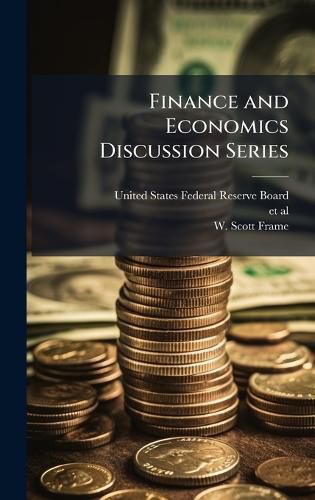Readings Newsletter
Become a Readings Member to make your shopping experience even easier.
Sign in or sign up for free!
You’re not far away from qualifying for FREE standard shipping within Australia
You’ve qualified for FREE standard shipping within Australia
The cart is loading…






This title is printed to order. This book may have been self-published. If so, we cannot guarantee the quality of the content. In the main most books will have gone through the editing process however some may not. We therefore suggest that you be aware of this before ordering this book. If in doubt check either the author or publisher’s details as we are unable to accept any returns unless they are faulty. Please contact us if you have any questions.
The primary mission of the 12 cooperatively owned Federal Home Loan Banks (FHLBs) is to provide their members financial products and services to assist and enhance member housing finance. In this paper, we consider the role of the FHLBs' traditional product--"advances," or collateralized loans to members--in stabilizing commercial bank members' residential mortgage lending activities. Our theoretical model shows that using membership criteria (such as a minimum of 10 percent of the portfolio being in mortgage-related assets) or using mortgage-related assets as collateral does not ensure that FHLB advances will be put to use for stabilizing members' financing of housing. Indeed, our model demonstrates that advances--a relatively low cost managed liability--are most likely to influence lending only when such liabilities are used to finance "relationship" loans (i.e., loans to bank-dependent borrowers) that will be held on a bank's balance sheet and are least likely to influence lending for loans where the loan rate is heavily influenced by securitization activities, like mortgages.
This work has been selected by scholars as being culturally important, and is part of the knowledge base of civilization as we know it. This work was reproduced from the original artifact, and remains as true to the original work as possible. Therefore, you will see the original copyright references, library stamps (as most of these works have been housed in our most important libraries around the world), and other notations in the work.
This work is in the public domain in the United States of America, and possibly other nations. Within the United States, you may freely copy and distribute this work, as no entity (individual or corporate) has a copyright on the body of the work.
As a reproduction of a historical artifact, this work may contain missing or blurred pages, poor pictures, errant marks, etc. Scholars believe, and we concur, that this work is important enough to be preserved, reproduced, and made generally available to the public. We appreciate your support of the preservation process, and thank you for being an important part of keeping this knowledge alive and relevant.
$9.00 standard shipping within Australia
FREE standard shipping within Australia for orders over $100.00
Express & International shipping calculated at checkout
Stock availability can be subject to change without notice. We recommend calling the shop or contacting our online team to check availability of low stock items. Please see our Shopping Online page for more details.
This title is printed to order. This book may have been self-published. If so, we cannot guarantee the quality of the content. In the main most books will have gone through the editing process however some may not. We therefore suggest that you be aware of this before ordering this book. If in doubt check either the author or publisher’s details as we are unable to accept any returns unless they are faulty. Please contact us if you have any questions.
The primary mission of the 12 cooperatively owned Federal Home Loan Banks (FHLBs) is to provide their members financial products and services to assist and enhance member housing finance. In this paper, we consider the role of the FHLBs' traditional product--"advances," or collateralized loans to members--in stabilizing commercial bank members' residential mortgage lending activities. Our theoretical model shows that using membership criteria (such as a minimum of 10 percent of the portfolio being in mortgage-related assets) or using mortgage-related assets as collateral does not ensure that FHLB advances will be put to use for stabilizing members' financing of housing. Indeed, our model demonstrates that advances--a relatively low cost managed liability--are most likely to influence lending only when such liabilities are used to finance "relationship" loans (i.e., loans to bank-dependent borrowers) that will be held on a bank's balance sheet and are least likely to influence lending for loans where the loan rate is heavily influenced by securitization activities, like mortgages.
This work has been selected by scholars as being culturally important, and is part of the knowledge base of civilization as we know it. This work was reproduced from the original artifact, and remains as true to the original work as possible. Therefore, you will see the original copyright references, library stamps (as most of these works have been housed in our most important libraries around the world), and other notations in the work.
This work is in the public domain in the United States of America, and possibly other nations. Within the United States, you may freely copy and distribute this work, as no entity (individual or corporate) has a copyright on the body of the work.
As a reproduction of a historical artifact, this work may contain missing or blurred pages, poor pictures, errant marks, etc. Scholars believe, and we concur, that this work is important enough to be preserved, reproduced, and made generally available to the public. We appreciate your support of the preservation process, and thank you for being an important part of keeping this knowledge alive and relevant.